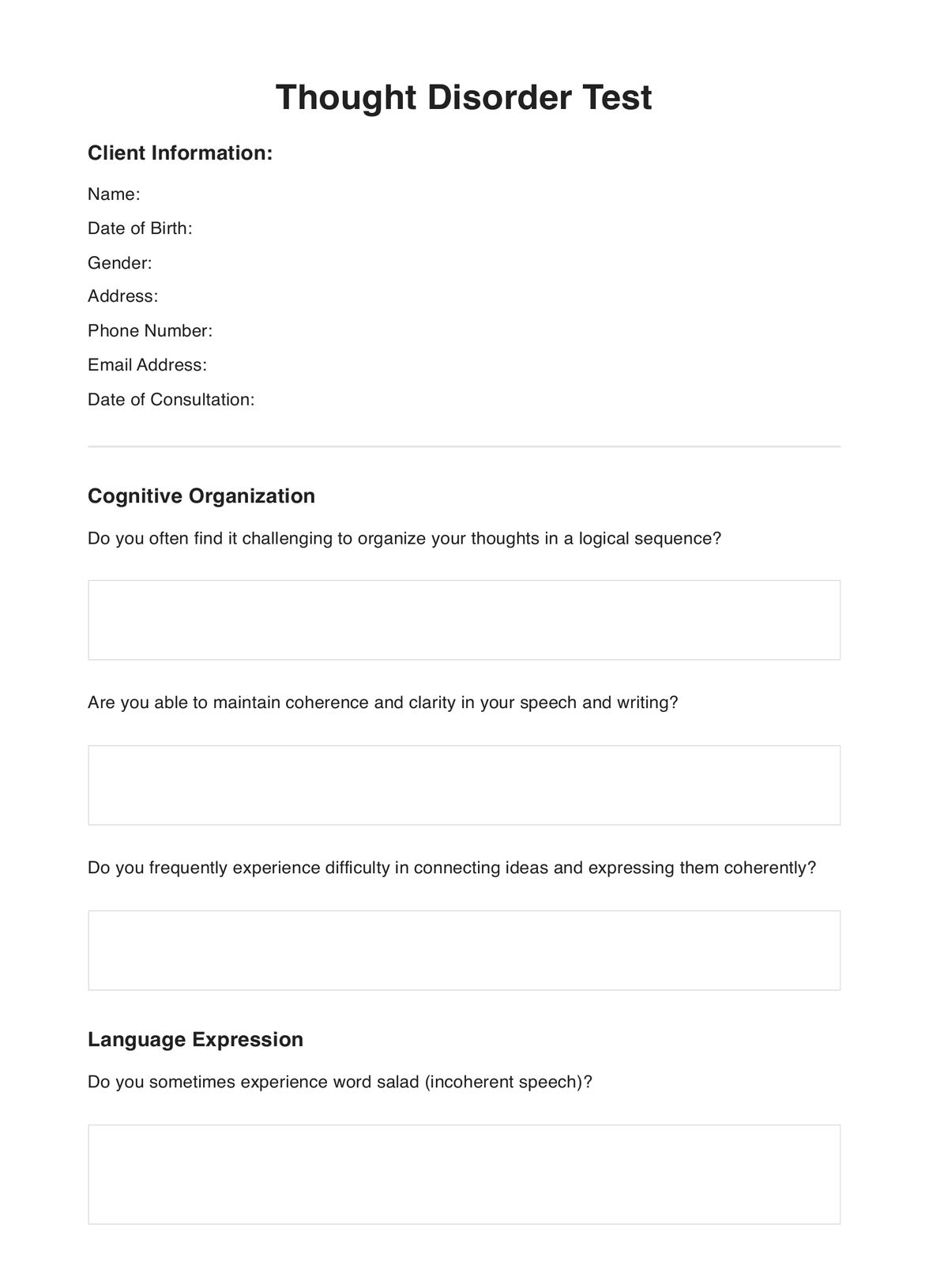The duration of the Thought Disorder Test can vary depending on the specific test format and the number of questions or prompts included. It typically takes approximately 15 to 30 minutes to complete, but it may take longer if additional sections or assessments are included.

Thought Disorder Test
Discover if you have a thought disorder with this comprehensive test. Assess cognitive patterns and gain insights into mental well-being.
Thought Disorder Test Template
Commonly asked questions
Yes, there are online versions of the Thought Disorder Test available. Many reputable mental health websites or platforms offer digital assessments that can be completed remotely. However, it is essential to ensure the reliability and validity of the online test source.
The Thought Disorder Test is not a diagnostic tool on its own. It provides valuable insights into an individual's cognitive functioning and potential thought disorder symptoms. A comprehensive evaluation by a qualified mental health professional is necessary to make an accurate diagnosis based on the test results and other relevant information.
EHR and practice management software
Get started for free
*No credit card required
Free
$0/usd
Unlimited clients
Telehealth
1GB of storage
Client portal text
Automated billing and online payments











